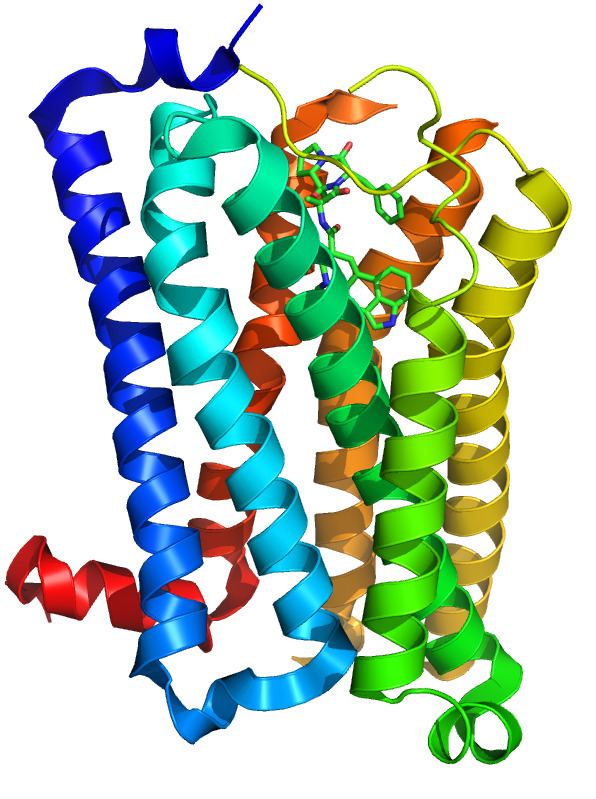Entrez 3351 | Ensembl ENSG00000135312 | |
 | ||
Aliases HTR1B, 5-HT1B, 5-HT1DB, HTR1D2, HTR1DB, S12, 5-HT-1B, 5-HT-1D-beta, 5-hydroxytryptamine receptor 1B External IDs MGI: 96274 HomoloGene: 669 GeneCards: HTR1B | ||
5-hydroxytryptamine receptor 1B also known as the 5-HT1B receptor is a protein that in humans is encoded by the HTR1B gene. The 5-HT1B receptor is a 5-HT receptor subtype.
Contents
Tissue distribution and function
5-HT1B receptors are widely distributed throughout the CNS with the highest concentrations found in the frontal cortex, basal ganglia, striatum, and the hippocampus. The function of the 5-HT1B receptor differs depending upon its location. In the frontal cortex, it is believed to act as a postsynaptic receptor inhibiting the release of dopamine. In the basal ganglia and the striatum, evidence suggests 5-HT signaling acts on an autoreceptor, inhibiting the release of serotonin and decreasing glutamatergic transmission by reducing miniature excitatory postsynaptic potential (mEPSP) frequency, respectively. In the hippocampus, a recent study has demonstrated that activation of postsynaptic 5-HT1B heteroreceptors produces a facilitation in excitatory synaptic transmission which is altered in depression. When the expression of 5-HT1B in human cortex was traced throughout life, significant changes during adolescence were observed, in a way that is strongly correlated with the expression of 5-HT1E.
Outside the brain, 5-HT1B receptor activation also has vascular effects, such as pulmonary vasoconstriction. Furthermore, blocking 5-HT1B receptor signalling increases the number of osteoblasts, bone mass, and the bone formation rate.
Knockout mice lacking the 5-HT1B gene have shown an increase in aggression and a higher preference for alcohol. Under basal conditions, knockout mice present with a "normal" phenotype and exhibit a sucrose preference (lack of sucrose preference is considered a measure of anhedonia). However, after undergoing chronic unpredictable stress treatment to induce a "depression-like" phenotype these animals do not benefit from administration of selective serotonin reuptake inhibitor (SSRIs).
Agonists
Partial agonists
Antagonists and inverse agonists
Genetics
In humans the protein is coded by the gene HTR1B.
A genetic variant in the promotor region, A-161T, has been examined with respect to personality traits and showed no major effect.
